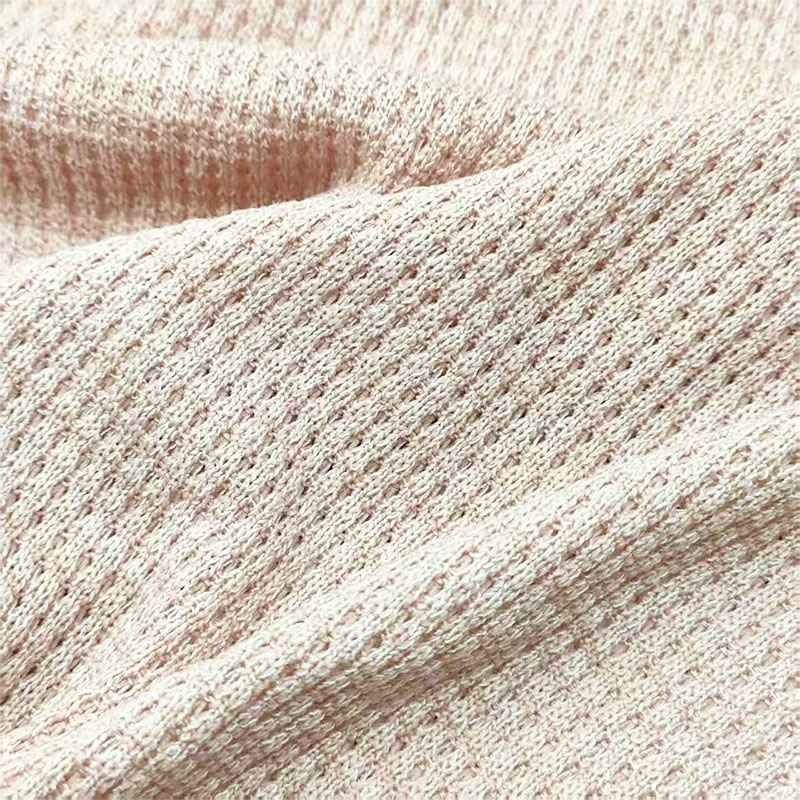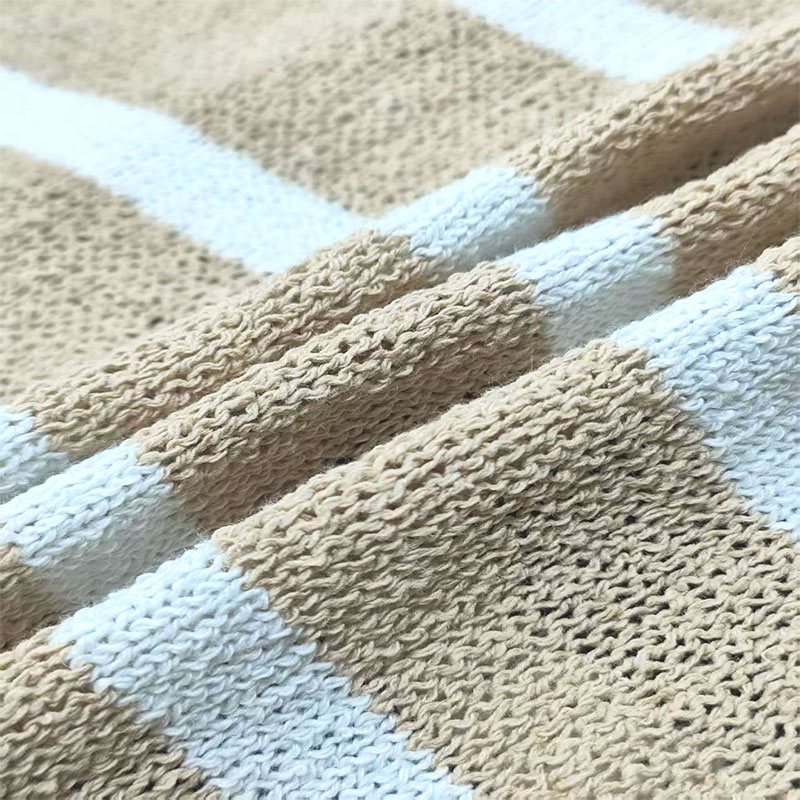On August 22, 2025, the 4-day 2025 China International Textile Fabrics and Accessories (Autumn & Winter) Expo (hereinafter referred to as the “Autumn & Winter Fabric Expo”) officially concluded at the National Exhibition and Convention Center (Shanghai). As an influential annual event in the global textile fabric industry, this expo centered on the core theme of “Innovation-Driven · Green Symbiosis”, gathering over 1,200 high-quality exhibitors from more than 30 countries and regions worldwide. It attracted over 80,000 international professional buyers, brand procurement managers, and industry researchers, with the intended cooperation amount reached on-site exceeding RMB 3.5 billion. Once again, it demonstrated China’s core hub status in the global textile industrial chain.
Expo Scale and Global Participation Reach New Heights
The exhibition area of this Autumn & Winter Fabric Expo covered 150,000 square meters, divided into four core exhibition zones: “Functional Fabric Zone”, “Sustainable Fiber Zone”, “Fashionable Accessories Zone”, and “Smart Manufacturing Technology Zone”. These zones covered the entire industrial chain from upstream fiber R&D, mid-stream fabric weaving to downstream accessory design. Among them, international exhibitors accounted for 28%, with enterprises from traditional textile powerhouses such as Italy, Germany, Japan, and South Korea showcasing high-end products. For instance, Italy’s Carrobio Group exhibited wool and recycled polyester blended fabrics, while Japan’s Toray Industries, Inc. launched degradable polyester fiber fabrics—both became focal points of attention at the expo.

From the procurement side, the expo attracted procurement teams from well-known international brands including ZARA, H&M, UNIQLO, Nike, and Adidas, as well as managers from over 500 large-scale garment OEM factories in Southeast Asia, Europe, and North America for on-site negotiations. According to statistics from the expo organizing committee, the maximum number of professional visitors received in a single day during the expo reached 18,000, and the consultation volume from international buyers increased by 15% compared with 2024. Among them, “sustainability” and “functionality” became high-frequency keywords in buyer consultations, reflecting the continuous growth of global demand for green and high-performance products in the textile market.
Sinofibers High-Tech’s Functional Products Become “Traffic Magnets”, Technological Innovation Spurs Cooperation Boom
Among the numerous exhibitors, Sinofibers High-Tech (Beijing) Technology Co., Ltd., a leading domestic fiber R&D enterprise, stood out as a “traffic magnet” at this expo with its cutting-edge functional fiber products. The company exhibited three major product series this time:
Thermostatic Warmth Series: Polyester fiber fabrics developed based on Phase Change Material (PCM) technology, which can automatically adjust temperature in the range of -5℃ to 25℃. Suitable for outdoor clothing, thermal underwear, and other categories, the fabrics’ thermostatic effect was intuitively demonstrated on-site through a device simulating extreme temperature environments, attracting a large number of outdoor brand purchasers to stop and consult.
Antibacterial Protection Series: Cotton-blended fabrics adopting nano-silver ion antibacterial technology, with an antibacterial rate of 99.8% tested by authoritative institutions. The antibacterial effect can still be maintained above 95% after 50 washes, making them applicable to scenarios such as medical protective clothing, infant clothing, and sportswear. Currently, preliminary cooperation intentions have been reached with 3 domestic medical consumables enterprises.
Moisture-Wicking & Quick-Drying Series: Fabrics with enhanced moisture absorption and sweat-wicking capabilities through special fiber cross-sectional design (special-shaped cross-section). Their drying speed is 3 times faster than that of ordinary cotton fabrics, while also featuring wrinkle resistance and wear resistance. Suitable for sportswear, outdoor work clothes, and other needs, an intended procurement agreement for 5 million meters of fabrics was signed with Pou Chen Group (Vietnam)—one of the largest garment OEM factories in Southeast Asia—during the expo.
According to the person in charge of Sinofibers High-Tech at the expo, the company received more than 300 groups of intended customers from 23 countries during the expo, with the intended order amount for clear cooperation intentions exceeding RMB 80 million. Among them, 60% of the intended customers were from high-end markets such as Europe and North America. “In recent years, we have continuously increased R&D investment, allocating 12% of our annual revenue to functional fiber technology research. The feedback from this expo has verified the importance of technological innovation in exploring the international market,” the person in charge said. Going forward, the company plans to further optimize the carbon emission indicators of its products in response to environmental regulations in the European market, promoting the upgrading of functional fabrics driven by both “technology and green development”.
Expo Reflects New Trends in Global Textile Trade, Chinese Enterprises’ Competitiveness Stands Out
The conclusion of this Autumn & Winter Fabric Expo not only built a business exchange platform for global textile enterprises but also reflected three core trends in the current international textile fabric trade:
Green Sustainability Becomes a Rigid Requirement: With the implementation of policies such as the EU’s Textiles Strategy and Carbon Border Adjustment Mechanism (CBAM), global buyers have increasingly strict requirements for the “carbon footprint” and “recyclability” of textile products. Expo data shows that exhibitors marked with “organic certification”, “recycled fiber”, and “low-carbon production” received 40% more customer visits than ordinary exhibitors. Some European buyers clearly stated that they “only consider fabric suppliers with carbon emissions below 5kg per meter”, forcing Chinese textile enterprises to accelerate their green transformation.
Demand for Functional Fabrics Becomes More Segmented: Beyond traditional functions such as warmth retention and waterproofing, “intelligence” and “health orientation” have become new directions for functional fabrics. For example, smart textile fabrics that can monitor heart rate and body temperature, outdoor-specific fabrics with UV protection and mosquito repellent properties, and home textiles that can inhibit mite growth—all these segmented categories gained high attention at the expo, reflecting the diversified market demand for “fabric + function”.
Regional Supply Chain Cooperation Becomes Closer: Affected by changes in the global trade pattern, the garment manufacturing industry in regions such as Southeast Asia and Latin America has developed rapidly, leading to a surge in import demand for high-quality fabrics. During this expo, buyers from Vietnam, Bangladesh, and Brazil accounted for 35% of the total international buyers, mainly purchasing mid-to-high-end cotton fabrics and functional chemical fiber fabrics. With their “high cost-effectiveness and fast delivery capabilities”, Chinese enterprises have become core cooperation partners for buyers in these regions.
As the world’s largest producer and exporter of textile fabrics, the performance of Chinese textile enterprises at this expo has further consolidated their advantageous position in the global industrial chain. In the future, with the in-depth advancement of technological innovation and green transformation, Chinese textile fabrics are expected to occupy a larger share in the international market with higher added value.
Post time: Aug-27-2025

